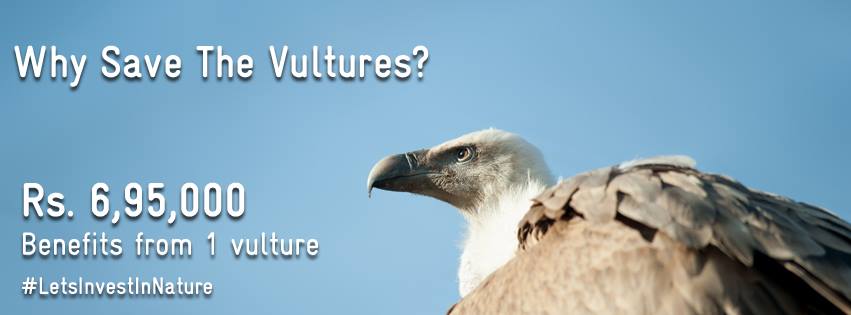Shubhangi Singh: As urbanisation continues to engulf us at a raging pace, natural elements that once functioned effortlessly through it’s own evolutionary patterns are, often, the least considered collaterals in present day India. Along the path of this haphazard, yet, steady depletion of natural environment, one key element in our tight-fitted microcosm is silently falling off the survival map.
Vultures are nature’s own clean up crew. These scavengers are known to be immensely effective at managing animal waste by feeding on animal carcasses that, otherwise, have no other ways of disintegrating fast enough. Without the contribution of these birds in the eco-system, the dangers of a slow-rotting animal carcass include air and water pollution as well as spreading of diseases that can chain-react to many degrees beyond the decomposing carcasses’ immediate surroundings. Once numbering in tens of millions, there has been a sharp decline in the vulture population in India and it’s sub-continents in the past decade — a whopping 99% drop, to put it into context! Several sub-species of the vultures including the Gyps Vulture, that is native to the Indian sub-continent, has been rapidly disappearing from our landscapes this past decade creating much concern amongst researchers and conservationists globally. One of the primary reasons for this alarming drop in the population has been credited to the indiscriminate use of an anti-inflammatory drug like Diclofenac amongst veterinary practitioners. Inexpensive non-steroidal anti-inflammatory drug like Diclofenac are effective for treating pain and inflammation in cattle and humans but are toxic for vultures once they scavenge on the carcasses of the Diclofenac administered cattle, resulting in renal failure and death of these birds. Although following reports, advocacy, and appeals from researchers and environmentalists, the drug now formally stands banned in India for veterinary purpose, it’s usage is, still, quite rampant. Despite the ban, Diclofenac continues to be used especially by para-vets, as they have little knowledge about the ban or choose to do so due to it’s low-cost appeal as opposed to some of it’s other, safer and marginally expensive substitute drugs like Meloxicam.
With the vulture population alarmingly low, administrations would be required to install waste-disposal plants in every municipality to do the job the vultures have been doing for free all these years. Given the higher population of livestock in the rural areas, present investment value required in carcass disposal services for the next 50 years in these areas is estimated to be around `351.5 million (US$ 5.85m) (estimates based on Indo-German Biodiversity Programme’s research). An equivalent amount of job could be done for free by just 300 pairs of vultures!
Given the pivotal position the vultures hold in affecting our own human health and functioning, it is interesting that Arundhati Roy’s much awaited literature ‘The Ministry of Utmost Happiness’ released last week opens with a metaphoric reference to vultures and the possible extinction of this species due to unregulated use of the toxic drugs. Through the analogy of vultures, the writer observes how toxicity in one part of the social ecosystem can affect and spread the rotting and eventual death of another key members of the same eco-system, which in turn, circles back into a loop of ironic disaster infinity – akin to the self-cannibalism of the mythical Ouroboros.
The ban on the toxic anti-inflammatory drugs has been a step towards vulture conservation but, given the criticality of the circumstance, leaps in that direction seems like the need of the hour. It is economically prudent to invest in the breeding and reintroduction of vultures and maintenance of Vulture Safe Zones (VSZ) instead of investing in carcass disposal plants. Vultures are a great big cog in the eco-system’s wheel whose existence depends on the human intervention and vice versa and, hence, greater care in the flourishing of this species would only benefit economical and environmental performance of the greater human operations.
So, let’s invest in nature!

